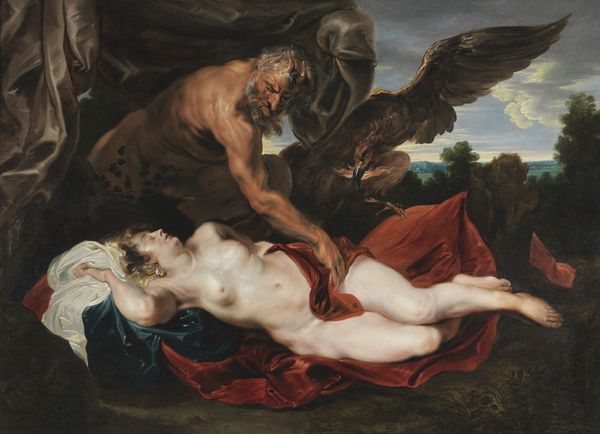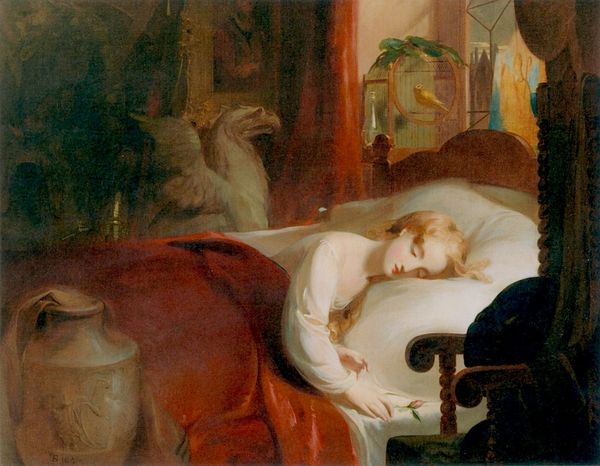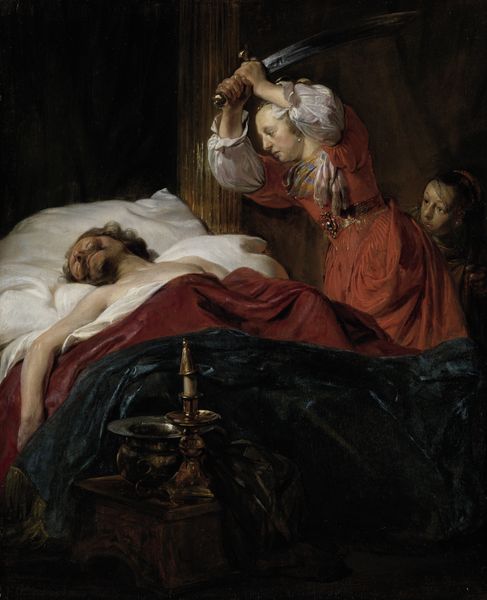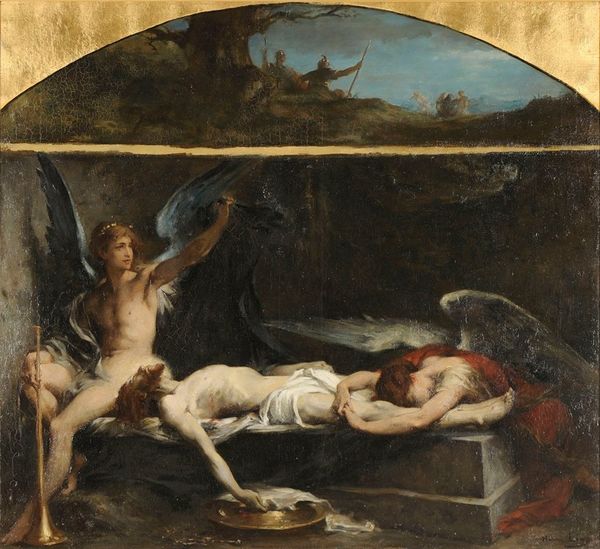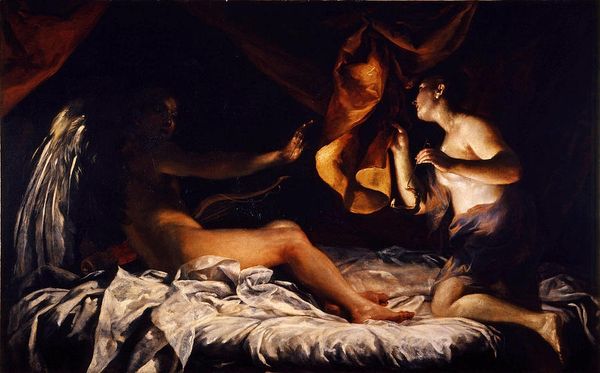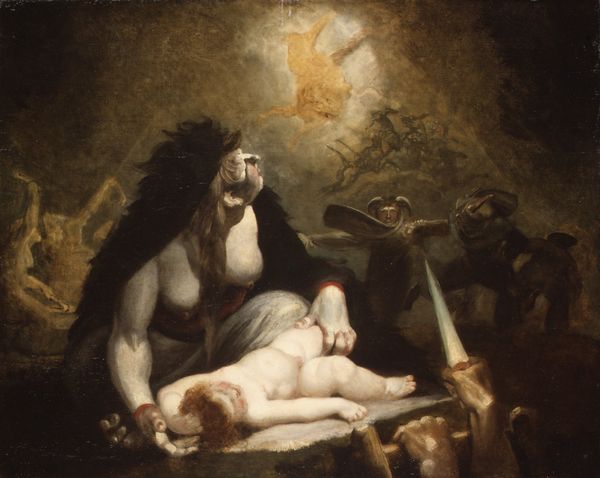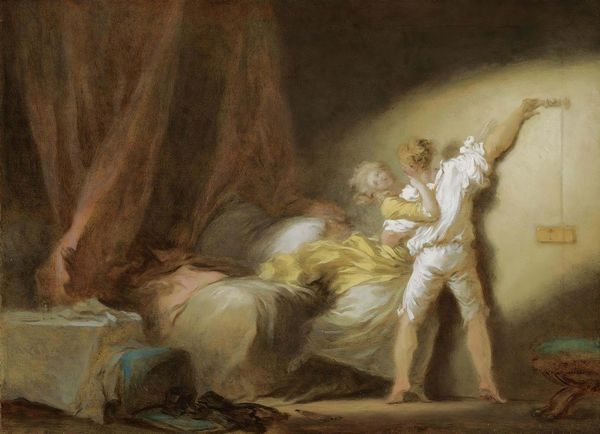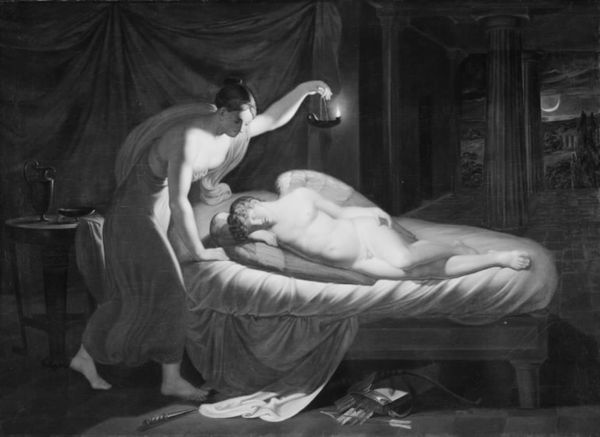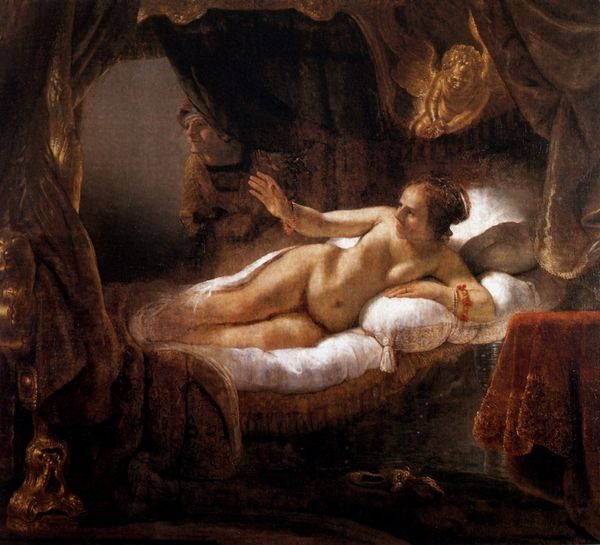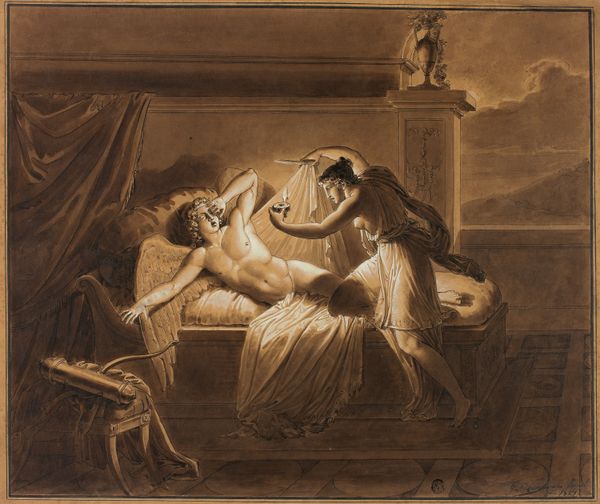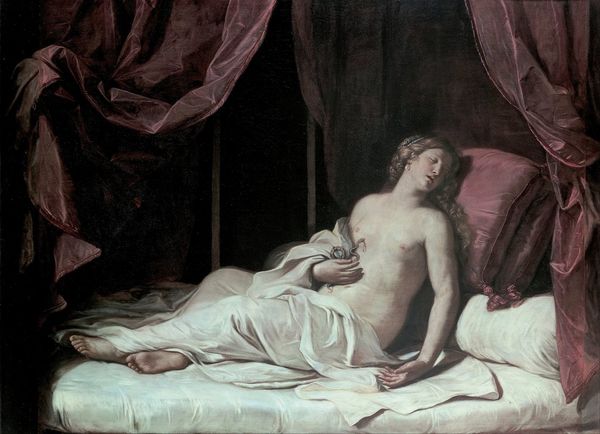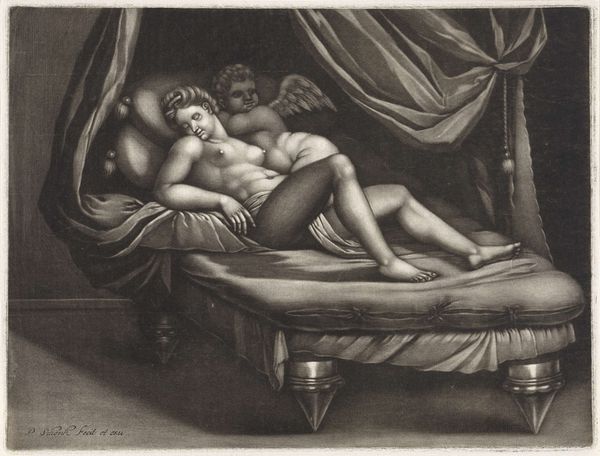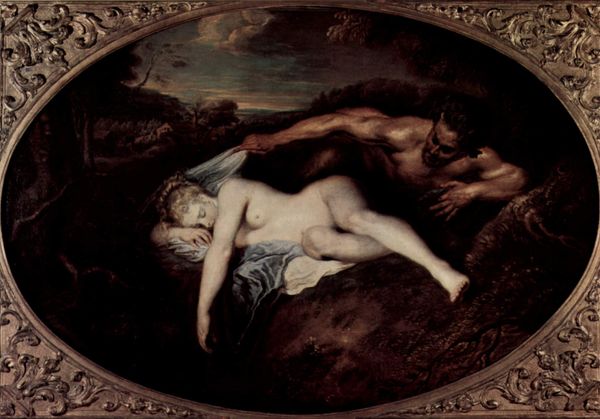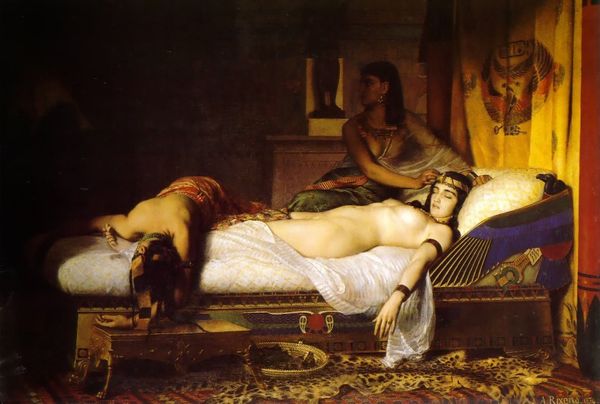
Dimensions: 101 x 127 cm
Copyright: Public domain
Did you know that the phrase ‘nightmare’ comes from the term ‘mara’, defined as ‘a spirit which tormented or suffocated sleepers’? In this painting from 1781, the Swiss-English artist Henry Fuseli (1741-1825) gives us a glimpse into a woman’s horrifying dream. The late eighteenth century is known as the Age of Reason, when the Enlightenment expanded. Yet this painting is far from rational – it’s strange and startling rather than scientific and realistic. It suggests the role of the unconscious mind in inventing dreams. The psychoanalyst Sigmund Freud had a print of this painting in his Vienna apartment! In this painting, a woman in a white gown lies draped across a bed, deeply asleep. Her white dress symbolises innocence and purity. Her arms are stretched out above her head, draping from the edge of the mattress. This pose leaves her body and neck exposed, creating a sense of vulnerability. On her chest squats a monstrous creature, a frightening compound of human and monkey. This is a physical manifestation of a nightmare, known as an imp or incubus. The imp glares out towards the viewer with a direct and confrontational gaze. Towards the left side of the canvas, a demonic black horse emerges from the shadowy curtains of the background. Take a look at those creepy glowing eyes! The horse was added into the composition later, after the rest of the painting was completed. ‘The Nightmare’ (1781) was displayed in the yearly Royal Academy exhibition of 1782. It was met with terror and shock! Here, Fuseli has used intense chiaroscuro (contrasts of light and shadow) to create extreme drama. The painting is now an iconic piece in the history of Romanticism and Gothic Horror.
Comments
No comments
Be the first to comment and join the conversation on the ultimate creative platform.
